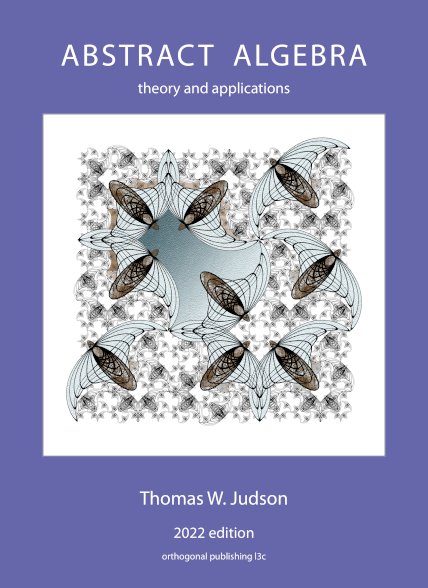Exercises 3.5 Exercises
2.
3.
Write out Cayley tables for groups formed by the symmetries of a rectangle and for
4.
Describe the symmetries of a rhombus and prove that the set of symmetries forms a group. Give Cayley tables for both the symmetries of a rectangle and the symmetries of a rhombus. Are the symmetries of a rectangle and those of a rhombus the same?
5.
Describe the symmetries of a square and prove that the set of symmetries is a group. Give a Cayley table for the symmetries. How many ways can the vertices of a square be permuted? Is each permutation necessarily a symmetry of the square? The symmetry group of the square is denoted by
6.
Give a multiplication table for the group
7.
8.
9.
Prove that the product of two matrices in
10.
11.
Prove that
12.
13.
Show that
14.
Given the groups
15.
Prove or disprove that every group containing six elements is abelian.
16.
17.
Give an example of three different groups with eight elements. Why are the groups different?
18.
19.
20.
21.
22.
Show that addition and multiplication mod
23.
Show that addition and multiplication mod
24.
25.
26.
27.
28.
Prove the remainder of Proposition 3.21: if
29.
Prove Theorem 3.23.
30.
Prove the right and left cancellation laws for a group
31.
32.
33.
34.
Find all the subgroups of
35.
Find all the subgroups of the symmetry group of an equilateral triangle.
36.
Compute the subgroups of the symmetry group of a square.
37.
38.
39.
40.
41.
42.
43.
44.
List the subgroups of the quaternion group,
45.
46.
47.
48.
49.
50.
Give an example of an infinite group in which every nontrivial subgroup is infinite.
51.
52.
Prove or disprove: Every proper subgroup of a nonabelian group is nonabelian.

